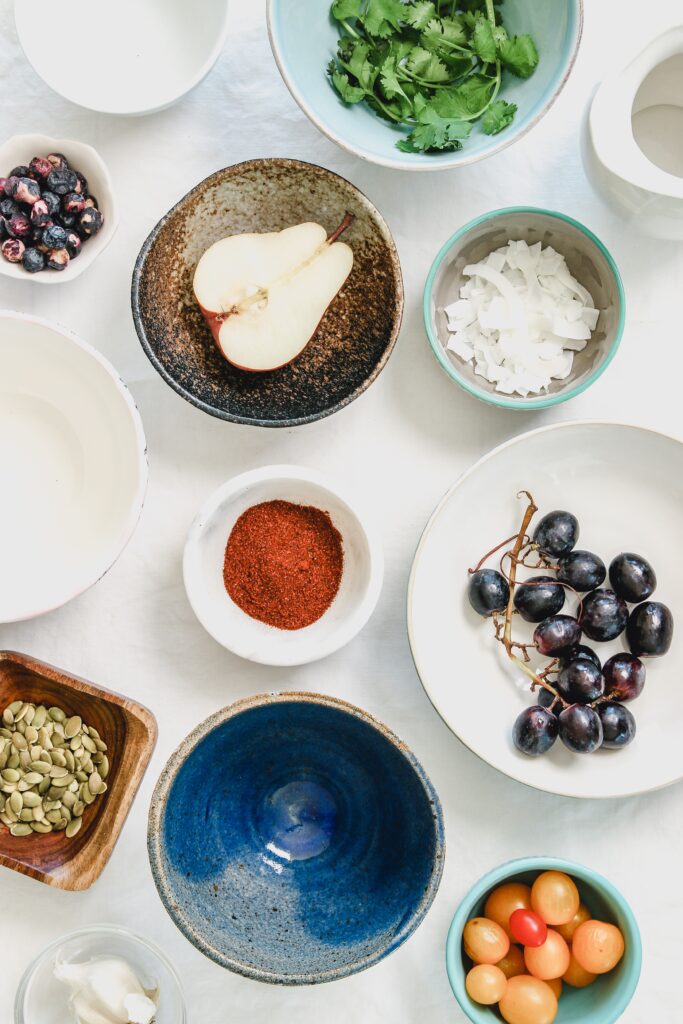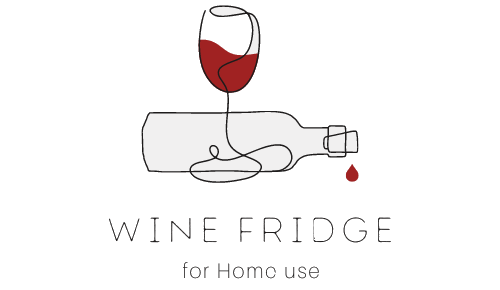You may have wondered if it is possible to store food in your wine fridge. After all, it’s called a “wine” fridge for a reason, right? Well, you’ll be pleased to know that the answer is yes, you can store food in your wine fridge. While its main purpose is to keep wine at a specific temperature and humidity level, a wine fridge can also serve as a handy additional storage option for various food items. Whether you need to keep certain fruits, vegetables, or even cheese at a cooler temperature, your wine fridge can come to the rescue. However, there are a few things to keep in mind to ensure the best storage conditions and maintain the integrity of both your wine and food items.

Understanding Wine Fridges
Wine fridges, also known as wine coolers, are appliances specifically designed to store and preserve wine at optimal temperatures. They provide controlled environments that are essential for maintaining the quality and flavor of wine over extended periods. Wine fridges are becoming increasingly popular among wine enthusiasts and collectors due to their ability to create the perfect storage conditions for different types of wines.
Working Mechanism of Wine Fridges
wine fridges operate using a refrigeration system that utilizes a compressor, evaporator, and condenser to regulate the temperature inside the unit. When you set the desired temperature, the compressor activates and cools the air, while the evaporator circulates the cooled air throughout the fridge. The condenser removes any excess heat generated during the cooling process, ensuring a consistent temperature is maintained. This mechanism enables wine fridges to provide the stable and precise temperatures necessary for wine storage.
Types of Wine Fridges
There are several types of wine fridges available on the market, each catering to different storage needs and preferences. The main categories include freestanding wine fridges, built-in wine fridges, dual-zone wine fridges, and thermoelectric wine fridges.
Freestanding wine fridges are stand-alone units that can be placed anywhere in your home. They offer versatility in terms of location and often come in various sizes to accommodate different bottle capacities. Built-in wine fridges, on the other hand, are designed to be integrated into kitchen cabinetry or other built-in spaces, offering a seamless and aesthetically pleasing look.
Dual-zone wine fridges feature separate compartments with individual temperature controls, allowing you to store different types of wine, such as red and white, at their respective optimal temperatures. Lastly, thermoelectric wine fridges use a different cooling technology that relies on the Peltier effect. They are known for their quiet operation and lack of vibrations, which can be beneficial for wine aging.
Ideal Temperature Range in Wine Fridges
Maintaining the right temperature is crucial for preserving and aging wine properly. The ideal temperature range for wine storage in a wine fridge typically falls between 45°F and 64°F (7°C and 18°C). This range ensures that the wine matures gradually and maintains its unique characteristics. However, it’s important to note that different types of wine have specific temperature requirements. For example, red wines are generally stored at slightly warmer temperatures than whites, and sparkling wines require colder temperatures for optimal preservation.
Purpose of a Wine Fridge
Preservation and Aging of Wine
One of the primary purposes of a wine fridge is to preserve and age wine. Wine is a delicate and perishable beverage that can easily spoil if exposed to improper storage conditions. By providing a stable temperature environment, wine fridges prevent fluctuations that could negatively affect the aging process.
When wine is stored at consistent temperatures, it allows the chemical reactions that contribute to the development of desirable flavors and aromas to occur gradually. A wine fridge ensures that these processes take place under controlled conditions, promoting the optimal aging of wine and enhancing its overall quality.
Maintaining Optimal Wine Serving Temperatures
In addition to preserving and aging wine, wine fridges are also useful for serving wine at the ideal temperatures. The temperature at which wine is served significantly impacts its taste and aroma. For example, red wines are commonly served slightly below room temperature, while white wines are best served chilled. By using a wine fridge, you can ensure that your wine is always served at the perfect temperature, enhancing your enjoyment and appreciation of the wine.
Difference Between a Wine Fridge and Regular Fridge
You might be wondering why you can’t simply store your wine in a regular refrigerator. While it’s true that a refrigerator can provide cooler temperatures, it’s not designed to create the specific conditions required for optimal wine storage. Regular refrigerators tend to have colder temperature settings, which can be detrimental to wine and inhibit its aging process. Additionally, refrigerators often experience frequent temperature fluctuations as the doors are opened and closed, making them unsuitable for long-term wine storage. Wine fridges, on the other hand, are specially designed to maintain consistent temperatures and provide the necessary humidity control for storing wine.
Temperature Requirements for Different Foods
Safe Storage Temperatures for Various Types of Food
When it comes to storing food, temperature control is crucial for preserving freshness, preventing bacterial growth, and avoiding foodborne illnesses. Different types of food have specific temperature requirements to remain safe for consumption. Here’s a general guideline for safe storage temperatures:
-
Refrigerator: The temperature in a regular refrigerator should be set between 35°F and 40°F (1.6°C and 4.4°C). This range is suitable for preserving perishable foods such as meats, dairy products, and leftovers, as colder temperatures help slow down bacterial growth.
-
Freezer: The temperature in a freezer should be set at or below 0°F (-18°C). Freezing food halts the growth of most bacteria, allowing for longer storage periods. It’s important to store food in appropriate packaging to maintain quality and prevent freezer burn.
-
Pantry: Non-perishable foods, such as canned goods, grains, and dry goods, can be stored in a cool, dry pantry. The ideal pantry temperature is around 50°F to 70°F (10°C to 21°C). Temperature fluctuations should be minimized to prevent spoilage.
Risk of Food Spoilage at Incorrect Temperatures
Storing food at improper temperatures can increase the risk of bacterial growth and spoilage. When food is kept too warm, bacteria can multiply rapidly, leading to foodborne illnesses. On the other hand, if food is stored at temperatures that are too cold, it can affect the texture, taste, and overall quality of the food. Therefore, it’s important to understand the temperature requirements for different types of food and ensure they are stored appropriately.
Considerations for Storing Food in Wine Fridges
While wine fridges are specifically designed for wine storage, some people wonder if it’s safe to store food in them as well. Before considering using your wine fridge for food storage, it’s essential to understand the potential considerations and limitations.
Potential for Cross-Contamination
Cross-contamination occurs when harmful bacteria from one food item are transferred to another. If you choose to store both wine and food in the same wine fridge, there is a risk of cross-contamination. Wine fridges typically do not have separate compartments or air circulation systems to prevent this transfer of bacteria. Thus, it’s best to avoid storing food directly alongside wine bottles to reduce the risk of contamination.
Temperature Variations
Wine fridges are designed to maintain a stable temperature range for wine storage. However, the temperature in a wine fridge may not be as consistent as in a regular refrigerator. The opening and closing of the wine fridge door, as well as the compressor cycling on and off, can result in minor temperature fluctuations. While these fluctuations may not significantly impact wine storage, they can affect the quality and safety of certain food items that are more sensitive to temperature changes.
Lack of Proper Ventilation
Proper ventilation is crucial for preventing the buildup of excess moisture and maintaining a suitable environment for food storage. Most wine fridges are not equipped with ventilation systems designed for storing food. The lack of proper ventilation can lead to increased humidity levels, which may cause food to spoil more quickly.
Humidity Control Issues
Wine fridges are typically designed with humidity control features that maintain a specific level of moisture in the air to prevent wine corks from drying out. However, these humidity settings may not be suitable for storing certain types of food. Foods that require low humidity, such as bread or crackers, may become stale or lose their crispness in a wine fridge.

Possibility of Storing Foods in Wine Fridges
Foods that May Potentially be Stored in Wine Fridges
While it’s generally not recommended to store food in a wine fridge, there are certain items that can be safely stored for short periods. For example, some fruits and vegetables, such as grapes or cherry tomatoes, can be stored in a wine fridge to keep them cool and fresh. Bottled condiments, such as hot sauce or salad dressing, may also be suitable for temporary storage in a wine fridge as long as the temperature remains within safe limits.
Why Some Foods are Not Suitable for Wine Fridge Storage
Certain foods should never be stored in a wine fridge due to the potential risks associated with temperature and humidity variations. Foods that are highly perishable or require specific temperature conditions, like raw meats, seafood, or dairy products, should be stored in a refrigerator specifically designed for that purpose. Storing these items in a wine fridge can increase the risk of bacterial growth and foodborne illnesses.
The Impact of Food Storage on Wine
Possible Effects on Wine’s Flavor and Aroma
Storing food in close proximity to wine can have unintended consequences on the wine’s flavor and aroma. Foods with strong odors, such as onions or cheese, can potentially taint the wine and alter its taste. Similarly, the aromas from certain foods may be absorbed by the wine, diminishing its overall quality. To ensure the optimal sensory experience when consuming wine, it’s advisable to keep food and wine separate.
Risk of Contamination to the Wine
As mentioned earlier, cross-contamination is a concern when storing food alongside wine in a wine fridge. Bacteria from food items can potentially contaminate wine, leading to off-flavors and increasing the risk of spoilage. To avoid compromising the quality and safety of your wine, it’s best to store it separately from food items.

Safety Aspects of Storing Food in Wine Fridges
Health Risks Associated with Incorrect Food Storage Temperatures
Storing food at incorrect temperatures can pose health risks due to the potential growth of harmful bacteria. Foods stored at temperatures above 40°F (4.4°C) for extended periods can become breeding grounds for bacteria that cause food poisoning. These bacteria can multiply rapidly and may result in gastrointestinal illnesses if consumed. By storing food in an appropriate refrigerator designed for food storage, you can minimize the risk of bacterial growth and ensure the safety of your meals.
Measures to Keep Stored Food Safe
To maintain the safety and quality of your stored food items, it’s important to follow some basic guidelines:
- Store perishable foods in the refrigerator at the recommended temperature range to slow down bacterial growth.
- Keep raw meats and seafood separate from other food items to prevent cross-contamination.
- Use airtight containers or food storage bags to maintain freshness and prevent odors from spreading.
- Regularly check the expiration dates of your stored food and discard any items that have gone bad.
- Clean your wine fridge regularly, especially if you store any food items temporarily. This helps prevent the buildup of bacteria or mold that could contaminate your food or wine.
Conclusion: Can You Store Food in Your Wine Fridge?
In conclusion, although it is technically possible to store certain foods in a wine fridge, it is not recommended due to various considerations and potential risks. Wine fridges are specifically designed for storing wine at optimal temperatures and maintaining the ideal aging conditions. They are not equipped with features like proper ventilation, temperature consistency, or humidity control necessary for safe long-term food storage. Storing food in a wine fridge can lead to cross-contamination, temperature fluctuations, and compromised food safety.
To ensure the longevity and quality of both your wine and food, it is best to invest in separate appliances specifically designed for each purpose. A dedicated refrigerator for food storage and a wine fridge for your collection will provide the optimal environments for both your favorite wines and perishable food items, giving you peace of mind knowing that everything is stored safely and appropriately.
Summarizing the Key Points
- Wine fridges are designed to create the ideal storage conditions for wine, including temperature and humidity control.
- They are not suitable for storing food due to the potential for cross-contamination, temperature fluctuations, lack of ventilation, and humidity control issues.
- Storing food in a wine fridge can compromise the quality and safety of both the food and the wine.
- It is recommended to use separate appliances for wine storage and food storage to ensure the proper conditions for each.
Final Verdict on Food Storage in Wine Fridges
While it may be tempting to utilize a wine fridge for food storage, it’s best to resist the temptation and follow the manufacturer’s intended use. Investing in separate appliances designed for specific purposes will ensure that both your wine and food are stored in the ideal conditions, preserving their quality and enhancing your overall enjoyment. So, resist the urge to store food in your wine fridge and savor the unique experience of having a dedicated appliance for your wine collection.
